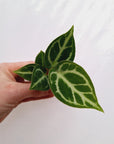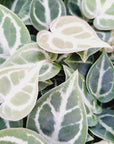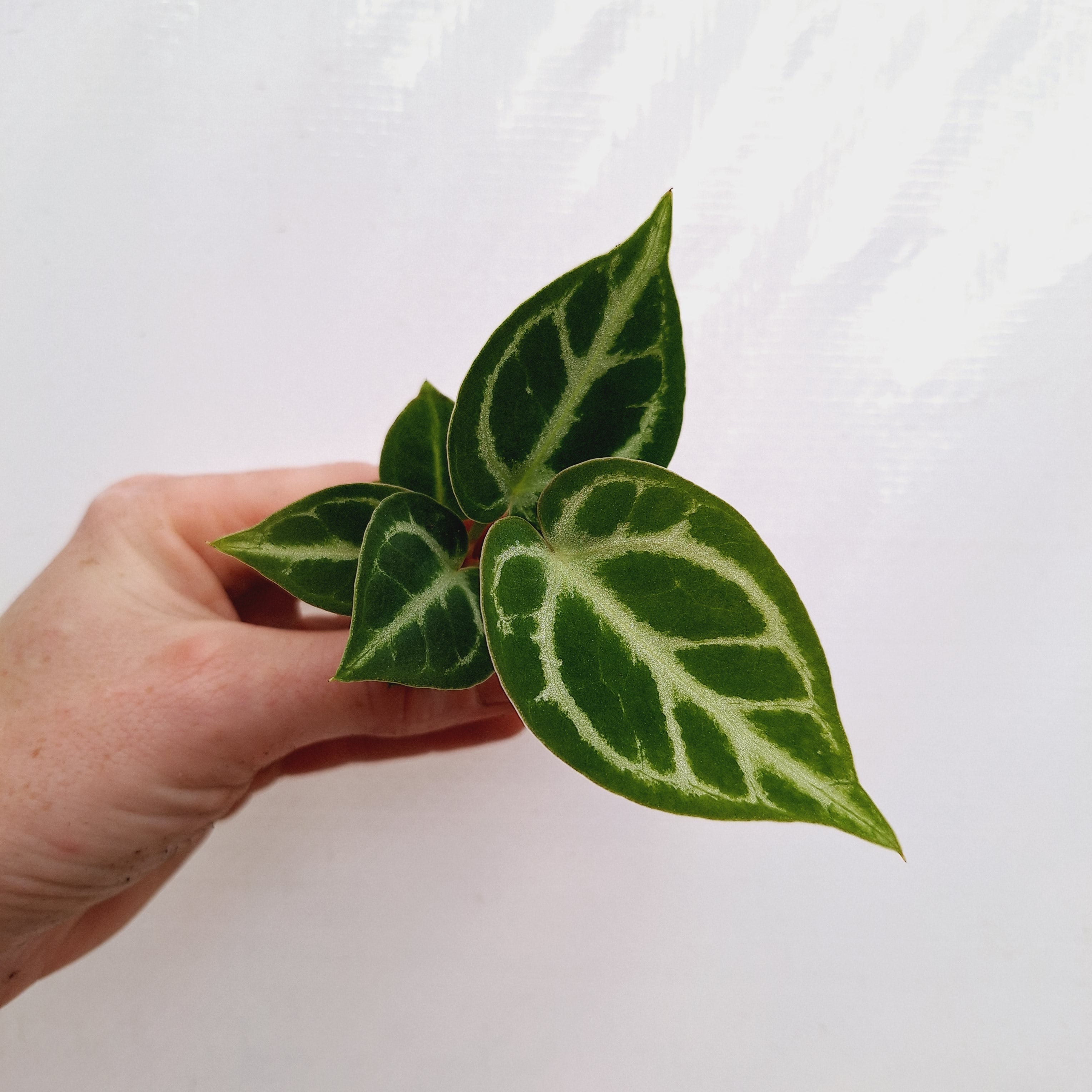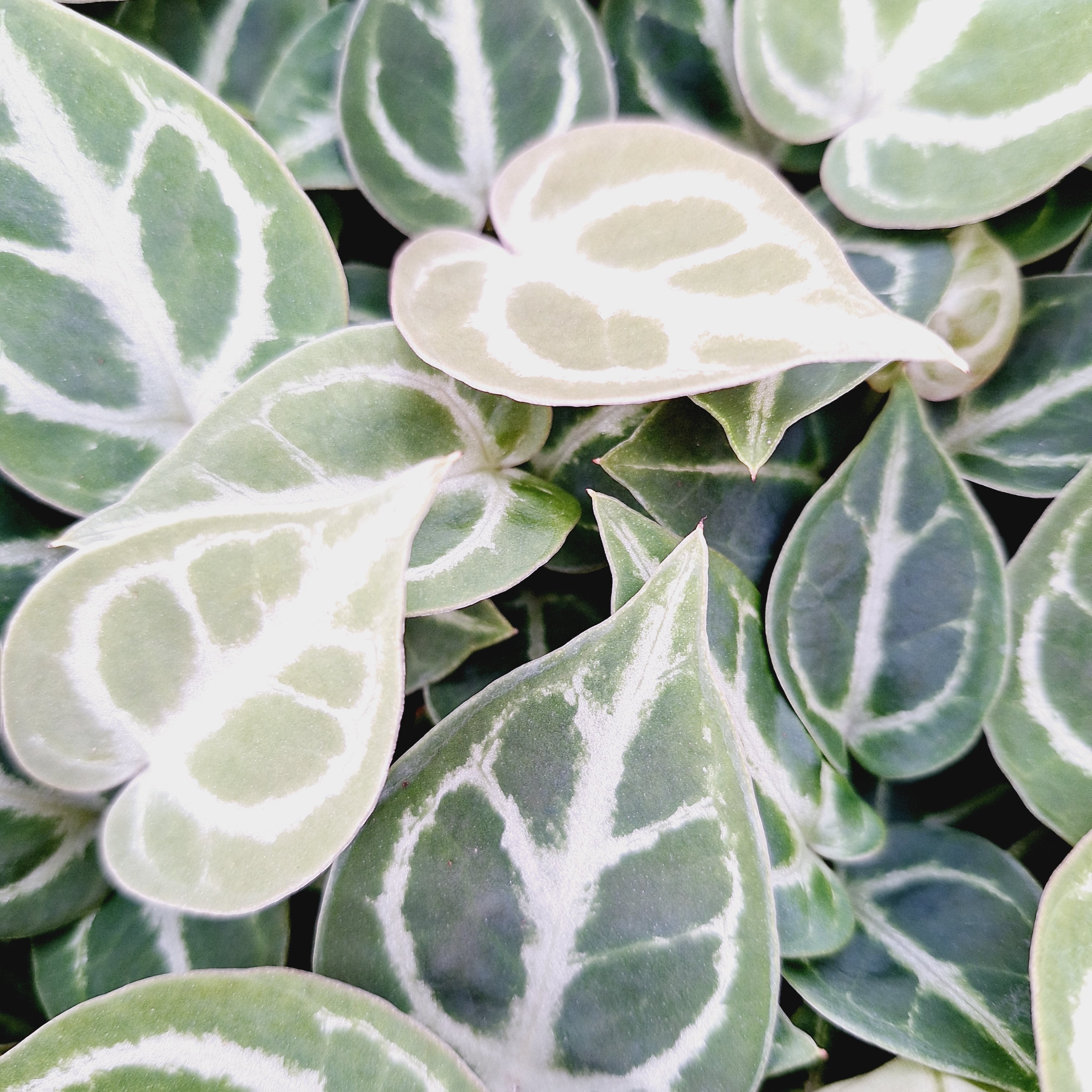

Anthurium Dorayaki - Bare Bottom Baby
Anthurium 'Dorayaki' is a captivating hybrid variety known for its unique, heart-shaped leaves that have a lush, velvety texture. The foliage typically ranges from deep green to a rich, dark shade with prominent, contrasting veins. The plant’s compact growth habit and thick, leathery leaves make it a favourite among Anthurium collectors. Its understated elegance adds a touch of sophistication to any indoor space.
Please note: These plants have been grown in seedling plug trays and therefore the root systems will not be as fully established as a larger pot size and will require extra attention. Plants are on average 5cm in length and photos on the website are indicative only. Please take this into consideration with each purchase of the Bare Bottom Babies. The dispatch team always pick the best plants that are available.
Anthurium Dorayaki Care Plan
1. Light:
- Bright, Indirect Light: Anthurium Dorayaki thrives in bright, indirect light. Direct sunlight can scorch its delicate leaves, while low light can slow down its growth and reduce the vibrancy of the foliage. Place it near a north or east-facing window with filtered light.
2. Watering:
- Moderate Watering: Water the plant when the top 1-2 inches of soil feel dry to the touch. Anthuriums prefer to be kept slightly on the drier side rather than overly moist. Ensure the pot has proper drainage to prevent waterlogging, which can lead to root rot.
3. Humidity:
- High Humidity: This plant enjoys high humidity levels, ideally around 60-80%. To maintain adequate humidity, mist the leaves regularly, use a humidifier, or place the plant on a tray with pebbles and water.
4. Temperature:
- Warm Temperatures: Keep the Anthurium Dorayaki in a warm environment with temperatures between 18-27°C. Avoid exposing it to temperatures 15°C or sudden temperature changes, which can stress the plant.
5. Soil:
- Well-Draining, Airy Soil: Use a well-draining, chunky potting mix suitable for epiphytic plants. A mix containing orchid bark, perlite, and peat moss is ideal, allowing for good aeration and moisture retention without becoming soggy.
6. Fertilization:
- Regular, Diluted Feeding: Feed the plant every 4-6 weeks during the growing season (spring and summer) with a balanced, water-soluble fertilizer diluted to half strength. Reduce feeding in the fall and winter when the plant’s growth naturally slows down.

